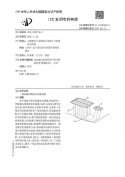I think so as well. It only adds bizarre confusion to misname the J-XY as "Sino-NGAD". Respectfully the NGAD being it's own plane has nothing to do with J-XY...
Its like calling ATF program "US-PAK FA".
Lol, to add to the confusion a little -- "J-XY" isn't a name which has been used for the PLA next gen/6th gen manned fighter.
J-XY is a name which has been occasionally thrown around in the past for J-35 prior to its name seemingly being confirmed.
The name for the PLA next gen/6th gen manned fighter which has been used for a bit (or at least, one which I use) is "J-XD".
Anyways if it gets some anti-BVR missile defense capability, it could be what makes China define it as game changing 6th gen instead of incremental 5th gen improvement.
TBH I would consider such a system to be relatively minor. Such a system would be more of a last ditch self defense weapon as part of the aircraft's self defense/countermeasures suite (think of it as a hit to kill version of chaff and flares). There's also no reason why 5th generation fighters couldn't necessarily be fitted with such a system either, depending on the space and cooling it requires.
IMO it will probably be better to view the "6th generation" of fighters as being greater than the sum of its parts.
What I mean, is if you take the below factors individually, they all seem one to one as relatively minor:
- Greater range
- Greater internal volume, weapons bay size
- Emphasis on system of systems/MUMT subsystems
- More potent networking, sensors and avionics with power generation and cooling for it and for future upgrades
- New propulsion system (such as VCEs)
- Improved self defense suite (including possibly hard kill self defense suite)
- Improved stealth
If you give a 5th generation fighter one or two of those factors then one might just consider to be an "improved 5th generation" aircraft, but instead, perhaps what you need is for all of those factors to be present together to better characterize a 6th generation aircraft.

